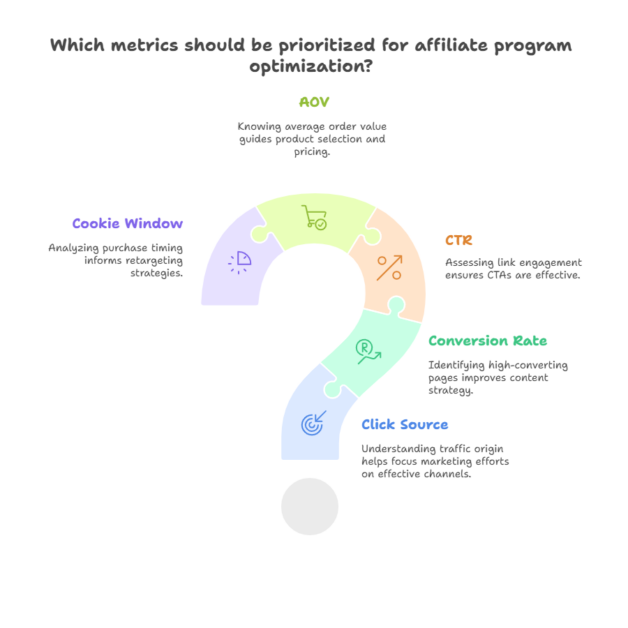Page Contents
You can drive all the traffic in the world to your Amazon links, but if you can’t track where your sales are coming from… you’re basically flying blind with a really expensive flashlight.
Affiliate marketing — especially Amazon affiliate marketing — isn’t just about dropping links and hoping for the best. It’s about knowing what actually works, what’s dead weight, and where the money’s hiding. That’s where tracking systems come in. And no, I’m not talking about copy-pasting a few UTM tags and calling it a day.
Let’s get into it — how to track affiliate sales like a pro, and why it’s absolutely essential if you’re even remotely serious about making this game profitable.
Why Affiliate Tracking Isn’t Optional (Especially on Amazon)
Let’s start with the basics. Most affiliate programs — Amazon included — are not designed to give you deep insights. You might see how many clicks you got and maybe how many items were sold, but you’re not told which piece of content, which platform, or which creator actually triggered the conversion.
If you’re working with Amazon’s native affiliate program, you already know the reports are… let’s say, “basic.” You can’t run split tests. You can’t track the behavior of your users. You don’t even know which exact keyword, post, or source made the sale happen.
And if you’re pushing dozens of products, across multiple platforms — YouTube, blog posts, social media, newsletters — then guess what? You’ve got chaos, not data.
That’s where pro-level tracking comes in. It’s how top affiliates:
- Scale what works.
- Cut what doesn’t.
- Automate like beasts.
- And stop wasting time on “maybe” traffic.
The Core Metrics You Need to Track (and Most People Don’t)
If you’re just tracking clicks and total commissions, you’re stuck in rookie mode. Here’s what real affiliate tracking should cover:


- Click source: Where exactly is your traffic coming from? Blog? TikTok? IG bio? Email? Reddit?
- Conversion rate by page: Which pages or videos are actually converting traffic into Amazon buyers?
- CTR (click-through rate): Are people even clicking your links? Or are your CTAs just sitting there doing nothing?
- AOV (average order value): Are you selling $12 phone cases or $600 espresso machines?
- Cookie window impact: Did they buy instantly or after a few days?
If your current setup doesn’t show you that? Yeah, it’s time for an upgrade.
Tools That Give You Superpowers (Compared to the Native Amazon Dashboard)
The first real step to better tracking is ditching the bare minimum and using better Amazon affiliate tools that were actually built for performance. These are platforms and dashboards that give you link-level attribution, custom reports, tagging systems, and even live-click tracking. Some of them even integrate directly with your content or email platform.
With the right stack, you’ll be able to:
- See which exact affiliate links are converting
- Compare performance between content formats (e.g., long-form blog vs. carousel post)
- Monitor mobile vs. desktop sales behavior
- Track commission potential by product category
You don’t need a PhD in analytics to do this. You just need tools that aren’t stuck in 2008.
Why Automation Is the Secret Weapon of Top Affiliates
Now here’s the part that separates decent affiliates from absolute monsters: automation.
Let’s say you’re managing 40+ affiliate links across 10 posts, 3 platforms, and 5 funnels. Updating those links manually? Tracking each one separately? Building new shortened URLs every time? That’s a full-time job (and a boring one).
But when you use systems built for Amazon affiliate automation — you don’t just track better; you work less while earning more.
Automated systems can:
- Auto-generate tracking links for new posts
- Tag every new click with source/medium/campaign
- Push all affiliate data into your central dashboard or CRM
- Fire alerts when a link is underperforming
- A/B test landing pages or product placements
Basically, you set it once, tweak occasionally, and let the system run while you focus on content or outreach. It’s how affiliate income turns from passive-ish to passive-real.
The Tracking Mindset: Why Pros Think in Funnels, Not Links
Here’s a hard truth: beginner affiliates think in terms of links. Professionals? They think in terms of funnels.
A funnel means knowing the entire journey — not just what got clicked, but what got ignored, what got hovered, what bounced, what bought, and what almost bought. It’s that mindset shift that makes all the difference.
A smart affiliate doesn’t say:
“I got 500 clicks on my gaming headset link.”
They say:
“My comparison table had a 14% clickthrough rate, most from mobile, and 27% of those clicks converted into sales over $70. But the sidebar widget barely did anything.”
That level of insight only happens when your tracking system is part of your content strategy — not some afterthought you bolt on once things go live.
Attribution Is Everything (Even More Than Traffic)
Think about it. If you’re posting affiliate content across TikTok, Medium, your blog, and maybe an email list, how do you know which of those channels actually brings in the buyers?
That’s attribution. And most people get it wrong — or worse, ignore it.
Amazon’s default attribution model is “last click,” and their cookie duration is 24 hours (unless someone adds to cart, which extends it). That means if you drove the traffic but someone else got the last click, they win the commission.
If that doesn’t annoy you, it should.
Proper affiliate tracking systems offer:
- Multi-touch attribution (so you see every step that led to a sale)
- Post-purchase behavior (did they buy more stuff?)
- Time-decay reports (when are people most likely to buy after clicking?)
This is the data that shows why some links perform better than others. And it helps you build smarter funnels — not just throw links around and pray.
So… Is Amazon Affiliate Actually Profitable in 2025?
Now let’s be real for a second. The question that never goes away:
– Is Amazon affiliate profitable in 2025?
The short answer? Yes — but only if you do it smarter than most.
Amazon’s commission rates aren’t huge. We know that. But the trick isn’t just in pushing volume — it’s in optimizing every step of your affiliate funnel:
- High-converting content (comparison, reviews, tutorials)
- Strong CTA placement (buttons > raw links)
- Targeting high-value categories
- Using tracking + automation to double down on what works
Affiliate marketing on Amazon isn’t a goldmine unless you mine strategically. The people who treat it like a business — with tools, automation, and tracking — are still making serious profit. The rest? They’re throwing links at the wall and wondering why nothing sticks.
Final Thoughts: Don’t Just Track. Optimize.
Tracking isn’t about feeling productive. It’s about being profitable. If you’re serious about turning your affiliate traffic into actual income, then investing in good tracking systems isn’t a luxury — it’s survival.
Because once you know:
- What works
- Where it’s working
- And why it’s working…
You stop guessing. You stop wasting time. And you start scaling.

